zeleno/iStock/GettyImages
A well-roasted piece of pork makes a superb centerpiece to a family meal. Its mild but rich flavor lends itself to a wide range of flavorings and accompaniments, from traditional choices such as applesauce or sauerkraut to Asian-inspired glazes or spicy Mexican rubs. Unfortunately, many attractive roasts prove to be dry and unappealing once they're sliced. Attention to a few basic points can help avoid that disappointment.
Done Like Dinner
One of the leading reasons for pork to be dry is simply that it's overcooked. The more a piece of meat is cooked the more its proteins shrink, and the less moisture it can retain. Generations of Americans were indoctrinated with the idea that pork must be cooked to well-done, to avoid trichinosis. With improved standards for raising and feeding hogs, that is no longer a hazard in commercially raised pork. Accordingly, the USDA now recommends that pork be cooked to an internal temperature of 145 degrees Fahrenheit, like most other fresh meats. That gives you roast pork that's perfectly cooked with just a hint of pink, and still juicy.
Leanness Isn't Your Friend
Doneness is complicated by the relative leanness of your roast. A fresh ham, pork shoulder or rib roast is well-marbled with fat, which helps keep it juicy, even after extended cooking. The popular loin cut, on the other hand, is very lean, except for the quarter-inch rind of fat that's usually left on the top. If you cook a loin roast past 145 F -- especially if you've trimmed away that protective layer of fat -- the roast will quickly become dry. On the other hand, for pulled pork, you can cook a Boston butt to 200 F, and it will remain moist and luscious.
Resting Time
Even when your pork roast is perfectly cooked, you can make it dry and unsatisfactory by whisking it to the table immediately after it comes out of the oven. Any roast or a roasted turkey, benefits from an extended resting period after it has cooked. Cover your pork loosely with a sheet of aluminum foil, and let it rest on a cutting board or serving tray for at least 10 minutes and preferably 15 to 20. During that time, the meat will firm up and become easier to slice in a neat fashion, and the roast's moisture -- forced to the middle by the heat of the oven -- will be redistributed throughout the muscle tissues. That produces a juicier, tastier slice of roast.
A Few Tips
A few simple tips will help ensure the best possible result from your roast. First, if you're serving diners who simply won't eat pork unless it's well done, buy a well-marbled shoulder or rib roast. The veins of fat will help keep the meat moist, even after long cooking. Second, leave the protective layer of fat in place during cooking. You can trim the fat away when you carve the roast, and you can easily skim the excess fat from your drippings.Third, use a meat thermometer or instant-read thermometer. It's the only way to know when your roast reaches the recommended food-safe temperature.
Related Articles
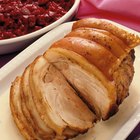
Does Cooking a Pork Roast Frozen Help ...
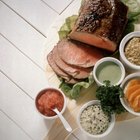
How to Cook 5 Lbs. of Beef Tenderloin
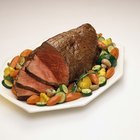
How to Cook a Roast Beef to a Perfect ...

What Is the Safe Cooking Temp for a ...
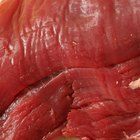
How to Trim and Tie a Beef Tenderloin
How to Convection Cook a Pork Shoulder ...

How to Make a Blackbuck Antelope Roast

What Are Pork Cutlets?
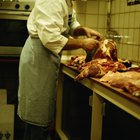
Cuts of Meat From a Front Quarter of ...
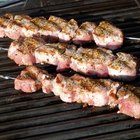
How to Cook Pork Loin

How to Bake a Pork Loin Center Half

Different Cuts of Steak
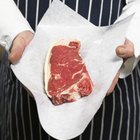
Tenderloin Filet Vs. Top Sirloin
What is the Best Meat for Pot Roast?

How to Cook a 15-Pound Rib Roast

How to Cook a Small Lamb Shoulder
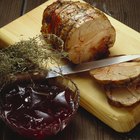
Low-Temperature Cooking of Baked Pork

The Best Way to Prepare Bison Sirloin
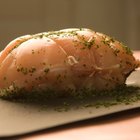
How to Braise Pork
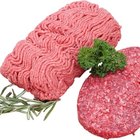
What Cuts of Meat Are Used for Ground ...
References
- On Cooking: A Textbook of Culinary Fundamentals; Sarah Labensky, et al.
- USDA Food Safety and Inspection Service: Fresh Pork from Farm to Table
Writer Bio
Fred Decker is a trained chef and prolific freelance writer. In previous careers, he sold insurance and mutual funds, and was a longtime retailer. He was educated at Memorial University of Newfoundland and the Northern Alberta Institute of Technology. His articles have appeared on numerous home and garden sites including GoneOutdoors, TheNest and eHow.